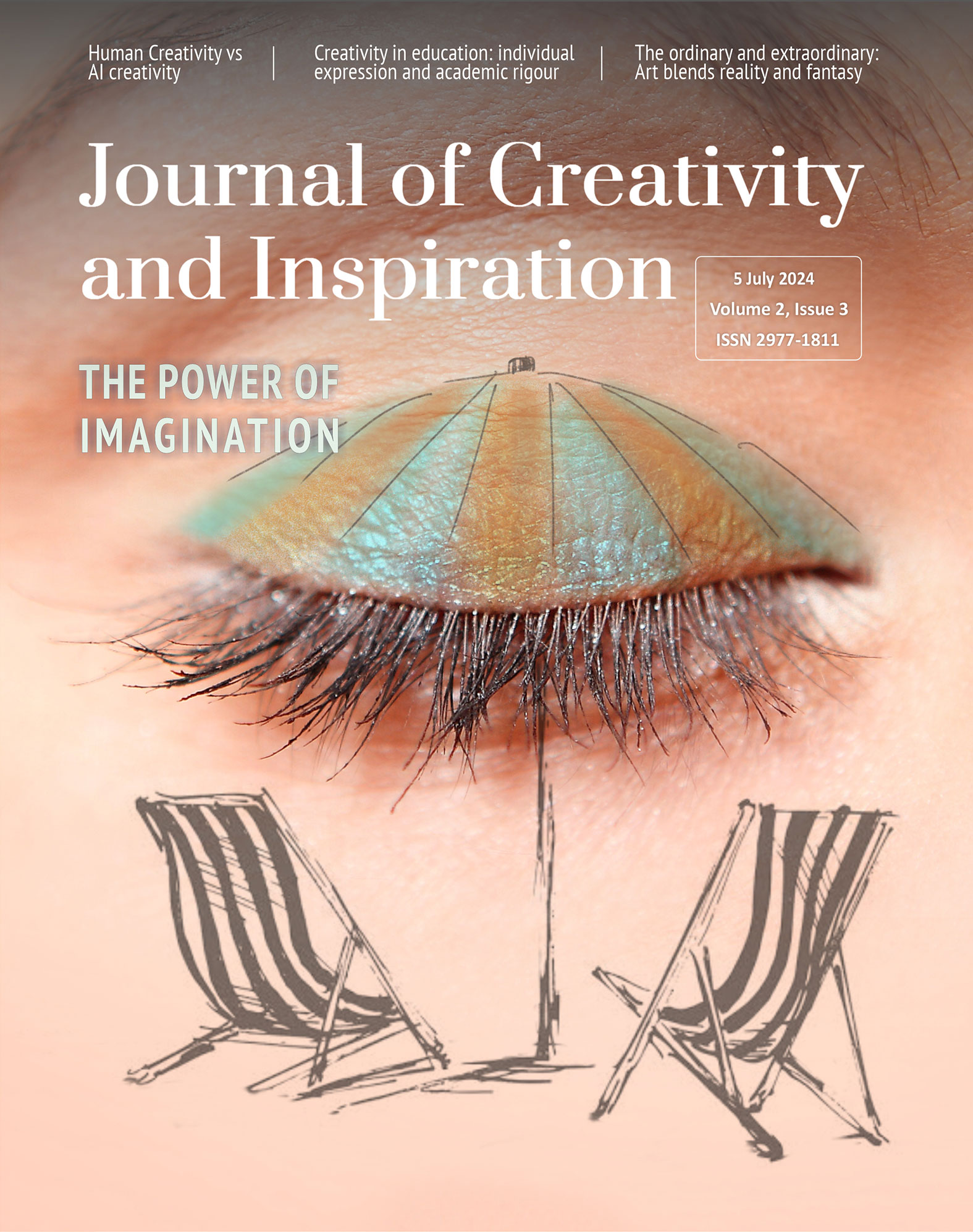Turning the ordinary into the extraordinary: Diego Cusano interviewed by Gil Dekel
5 July 2024 – Vol 2, Issue 3.
Gil: You have mentioned that your work lives between reality and fantasy. What is between reality and fantasy? What kind of ‘artistic space’ is there…?
Diego: Between reality and fantasy there is a space where real-world elements blend with imagination and creativity. In this space, the rules of logic can be challenged. It is a place where stories can be told in unexpected ways.
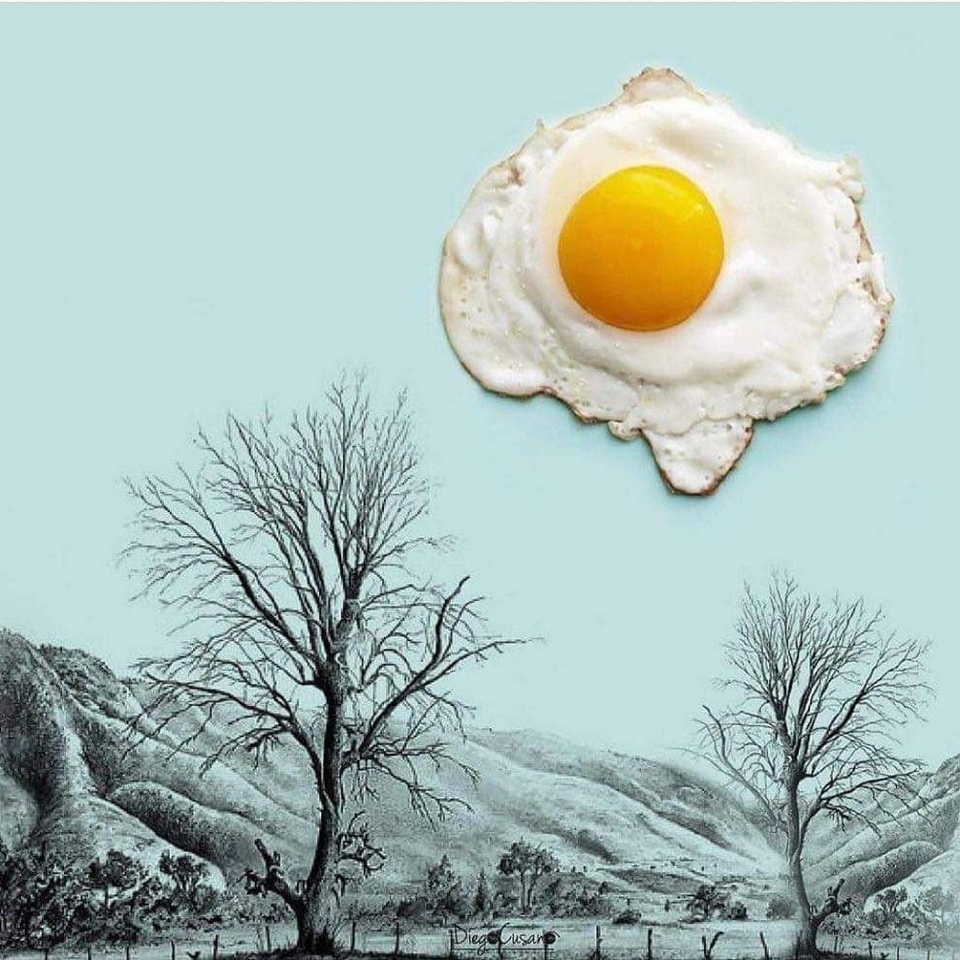
‘Autumn Egg Morning’, 2016.
Gil: What inspires you to choose the specific everyday objects you use in your illustrations?
Diego: I find inspiration in the small things that often go unnoticed, such as a spoon, a leaf, a piece of fruit. These ‘simple’ objects capture my imagination. I see a hidden potential, a story waiting to be told… I feel that each object has a special shape, texture, and function which is like a door to a world of creativity.
I use everyday objects in my art because I believe there is beauty in the things that surround us. These objects can reveal secrets… By transforming them, I bring out that which was unnoticed. It’s a way of inviting the observer to see the world with different eyes; to discover the creative potential hidden in everything. Ultimately, it’s an act of wonder and a celebration of simplicity.
Gil: That is why you sign your art with the words ‘Fantasy Researcher’?
Diego: Yes. ‘Fantasy Researcher’ means exploring the boundaries between reality and imagination, both in life and in art. Fantasy is a place where anything is possible… My mission is to reveal that magic, and create connections between what we see and what we dream of.
Gil: How do you decide on the theme of your illustrations?
Diego: It is an intuitive and spontaneous process. A fragment of nature, a household utensil, or an architectural detail can ignite a creative spark. I let myself be guided by the emotions and stories that these elements evoke in me. I leave room for imagination, allowing it to have a visual dialogue with reality. Each illustration is born from a moment of wonder.
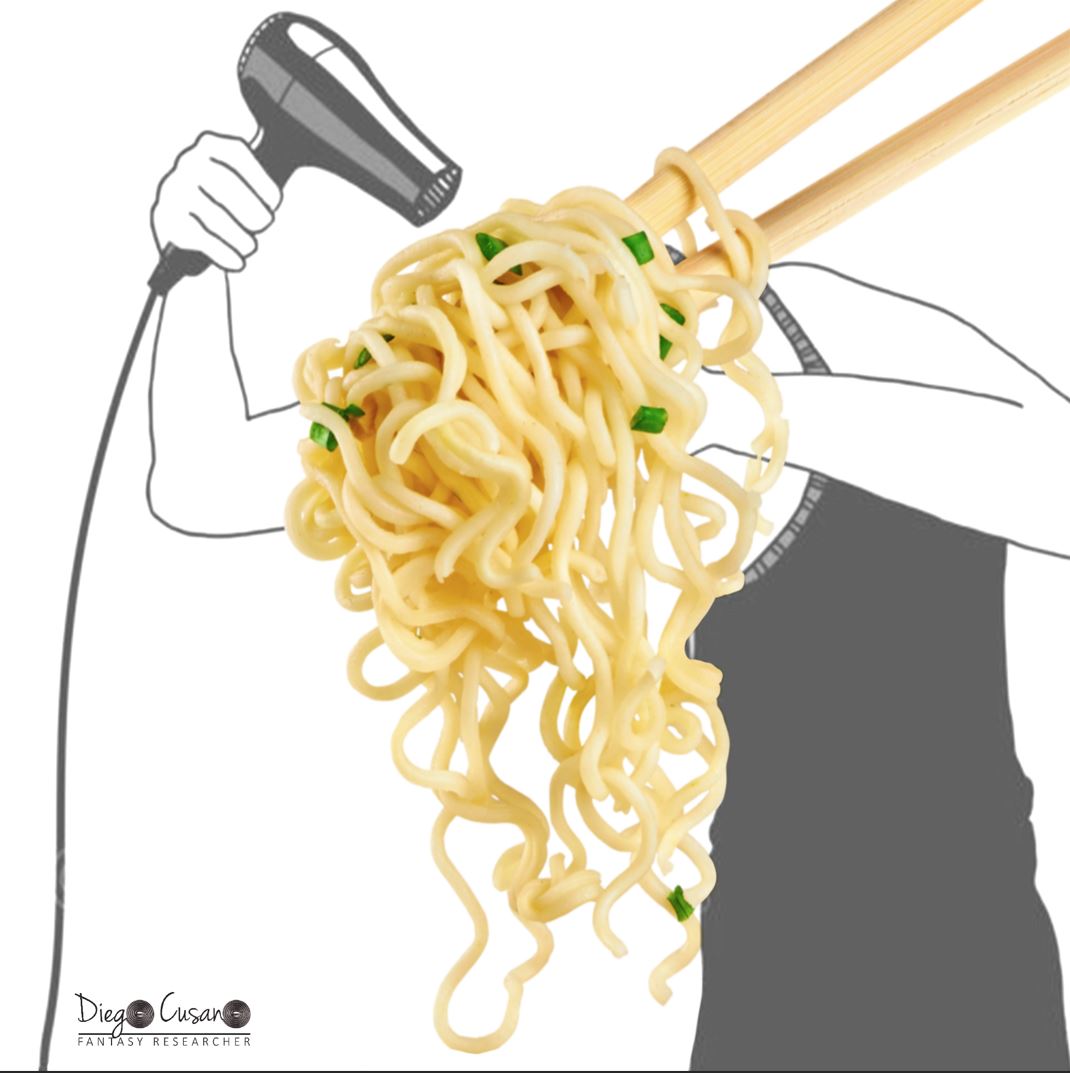
‘Japan hair’, 2018.
Gil: Are there art movements or artists that influence you?
Diego: Yes, many… Surrealism, in particular, has had a significant impact on me, with its ability to convey the dream state of reality. Salvador Dalí and René Magritte have taught me to see the world with new eyes. Additionally, my personal experiences and travels all over the world have taught me a lot. Every discovery I make about life is reflected in some way in my illustrations.
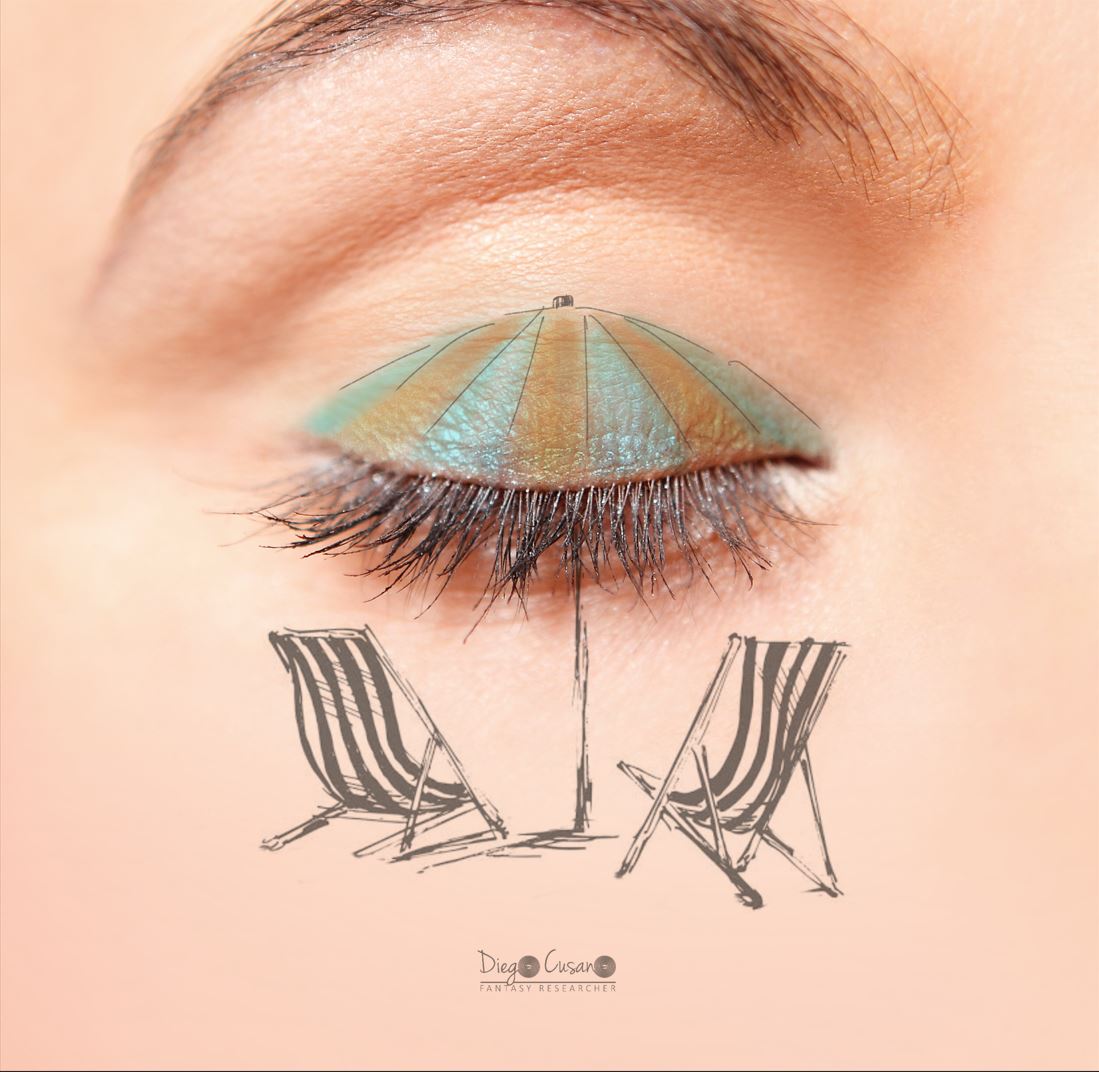
‘Summer dream’, 2018.
Gil: …Why do you create art?
Diego: I create art because it is my way of communicating with the world, expressing my emotions, and sharing my vision. Art is my language, a means to transform thoughts and feelings into something tangible and visible. It allows me to explore the invisible, and find beauty.
I want to inspire people to see the world with fresh eyes and discover its magic. I hope that my works create a bridge between reality and fantasy, showing that even the most common objects can become extraordinary when viewed with imagination. I want to encourage a sense of play and discovery, and also promote a message of positivity and hope. In a world that is often hectic and complex, I hope that my illustrations can offer a moment of pause, dream, and reflection – a small refuge where one can find joy.
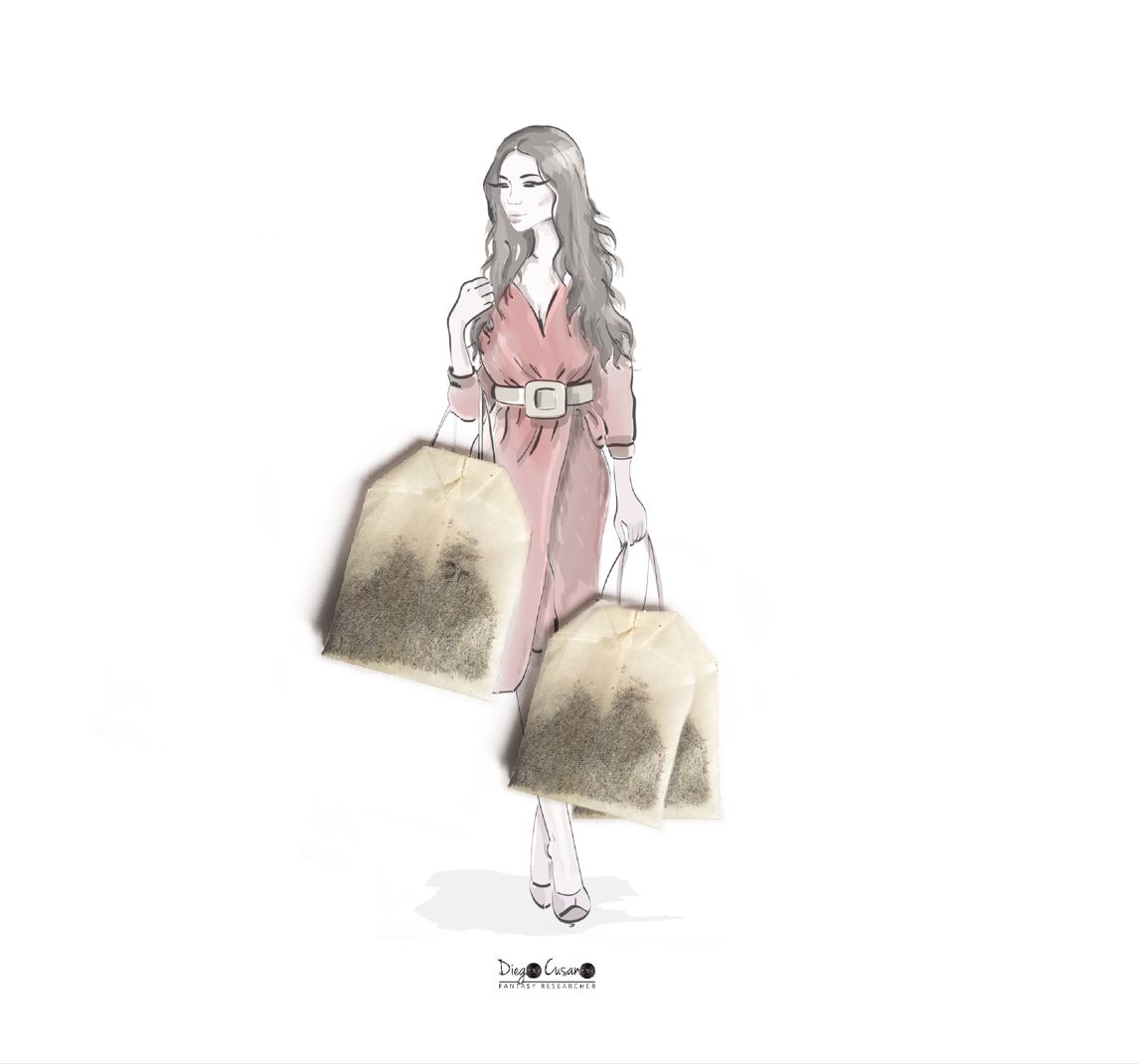
‘Shopping time’, 2018.
Gil: So, how do you look at things in different ways? How do you shift your perspective?
Diego: Through curiosity… I allow myself to see objects out of their usual context. For example, I take a simple coffee cup, and instead of seeing it just as a container for beverages, I start to imagine it as an element in a surreal scene.
So, the process begins with observation. I study the shape, the lines, and the curves of the cup. Then, I let myself be guided by the emotions and ideas the object evokes. Maybe I see the cup as a vessel for a small world, or as a hat of a character. At this point, I start sketching; exploring different possibilities.
Gil: Sometimes you continue to work on the same theme, creating variations, such as the following illustration, ‘Good morning’, which also uses a coffee cup.
Diego: Yes, I continue to work on the same theme, creating variations, simply because I enjoy striving for near perfection and finding the right symbiosis between objects and design, experimenting every day, and thus creating as many variations as possible.
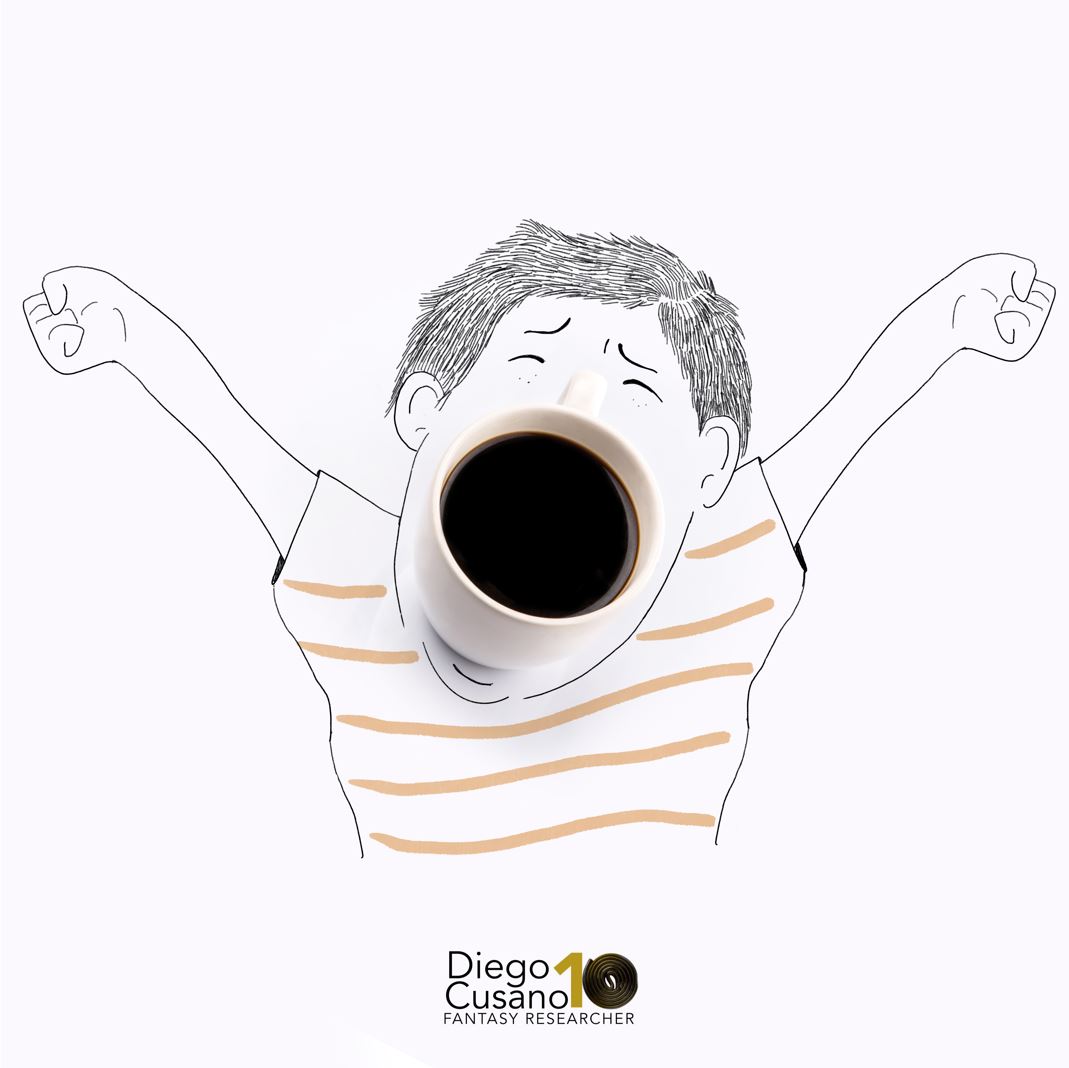
‘Good morning’, 2023.
Gil: Are there challenges in reinterpreting everyday objects when envisioning them; or maybe technical challenges you face when executing the works?
Diego: Yes, there are several challenges. When envisioning new compositions, one of the main difficulties is maintaining the balance between the original object and the fantasy. I want the object to remain recognizable while also ensuring that the new vision is surprising and coherent.
From a technical standpoint, one of the primary issues is proportions. I need to make sure that the object and the new elements I add integrate perfectly in terms of proportions and angles. This often requires many trials and adjustments.
Another technical aspect is managing the details. Transforming a simple object into a complex scene can be challenging, especially in maintaining visual consistency and colour harmony. Every added element must look natural and be an integral part of the final illustration. This process requires a balance between detailed observation and free imagination. It is a game of reinterpretation.
These challenges, however, are also what makes the creative process so rewarding. Every difficulty that I overcome adds some value to the final work.
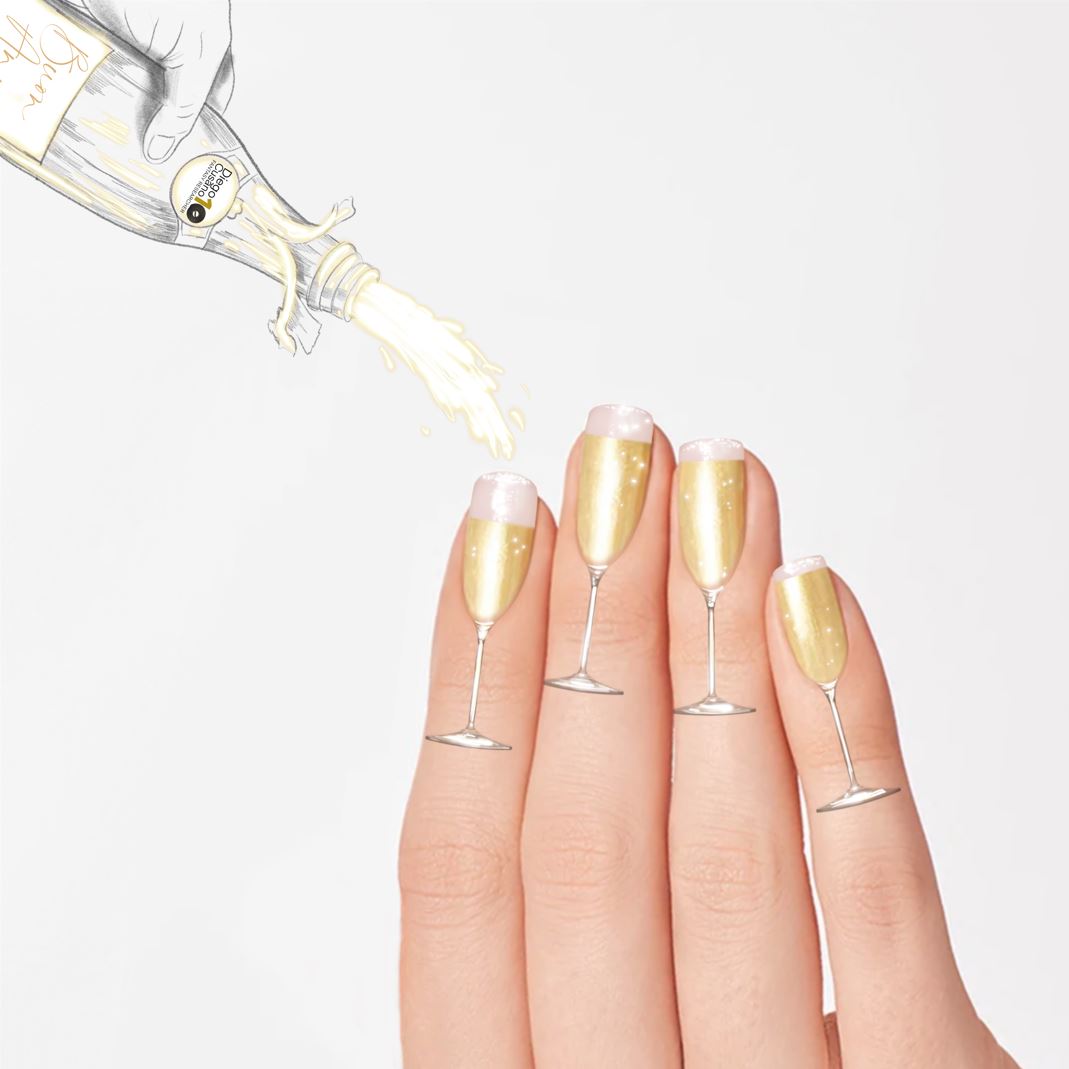
‘Happy Nails Year’, 2023.
Gil: How does music (sound) correlate to art (visual)?
Diego: For me, music is a source of inspiration. Sounds, melodies, and rhythms can influence my mood and the way I create my work. A sweet and melancholic melody might inspire me to create a delicate and dreamy illustration, while a lively and energetic rhythm might lead me to produce a dynamic and vibrant piece.
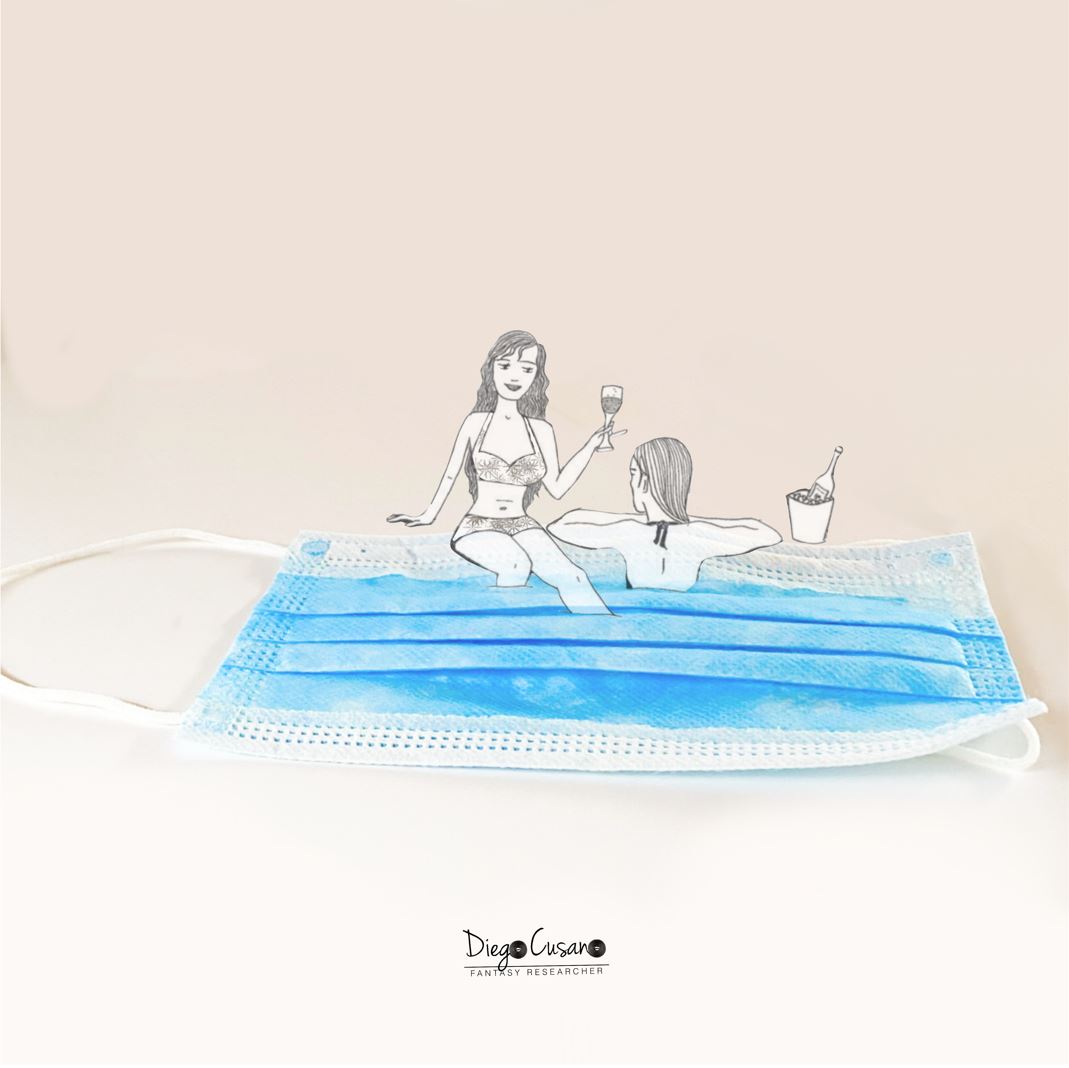
‘Pool mask’, 2021.
Gil: What are your future aspirations in terms of your artistic works?
Diego: I would like to explore new media and techniques, maybe experimenting with sculpture, animation, or augmented reality. I would also love to collaborate with other artists from different fields, such as music, fashion, and design.
I would love to see my works exhibited in international galleries, so as to share my work with a broader audience. Art has the power to connect people and inspire positive changes, and I want to contribute to this process on a global scale.
I aspire to create projects that make an impact both aesthetically and emotionally, stimulating curiosity and inspiring future artists to pursue their own creative journeys.
At a glance:
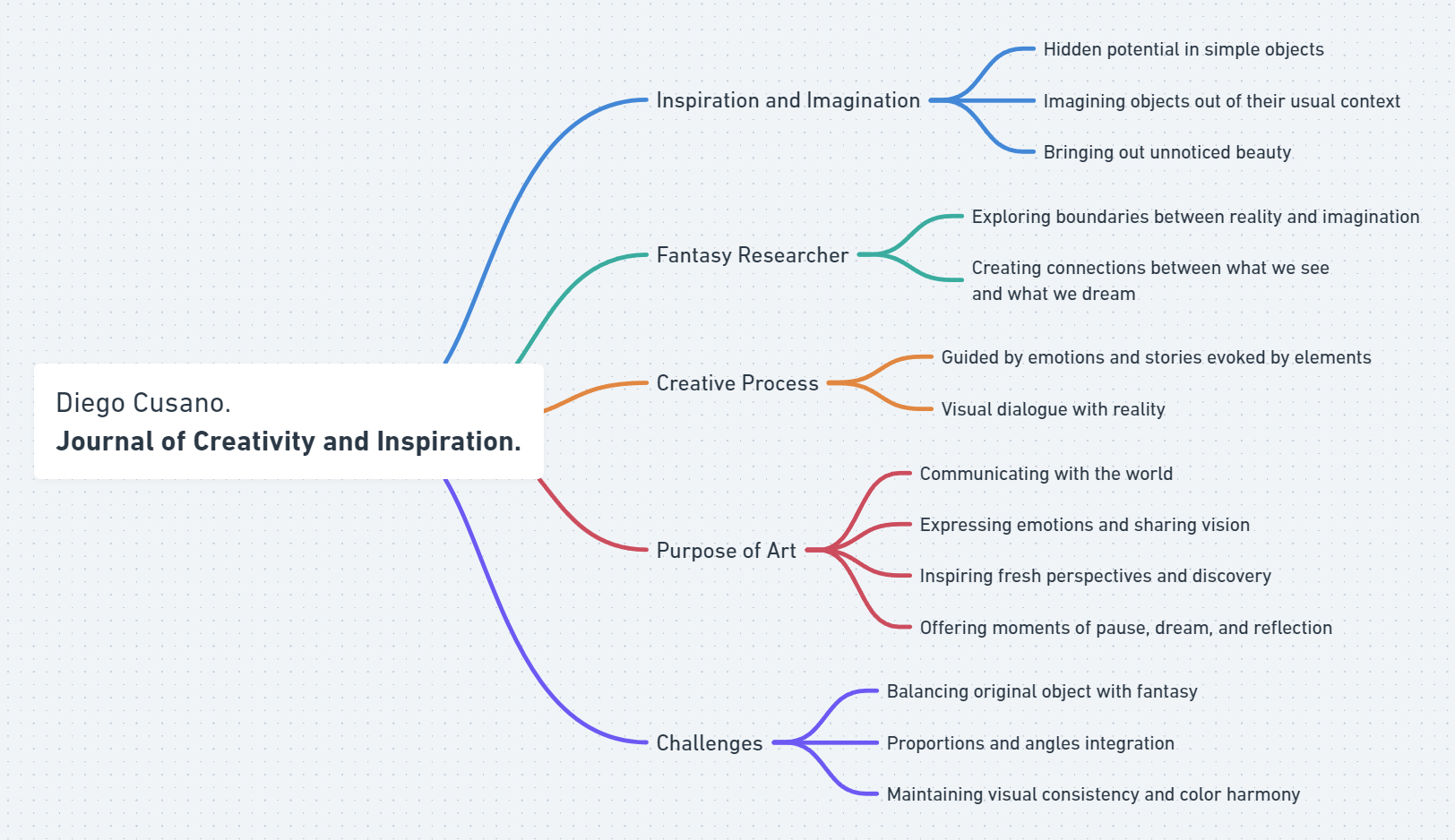
© Journal of Creativity and Inspiration.
Images/art © the artist.
Diego Cusano, self-titled ‘Fantasy Researcher’, earned a Master’s degree in Visual Arts and Graphic Design from the Academy of Fine Arts in Florence. In 2013, he began experimenting with collage, combining pencil drawings with still-life images.
Gil Dekel is a doctor in Art, Design and Media, specializing in processes of creativity and inspiration. He is a lecturer, visionary artist, Reiki Master/Teacher, and co-author of the ‘Energy Book’. He was awarded the Queen Elizabeth II Platinum Jubilee Coin, in recognition of his dedication and commitment to pastoral work at Hampshire Constabulary.
